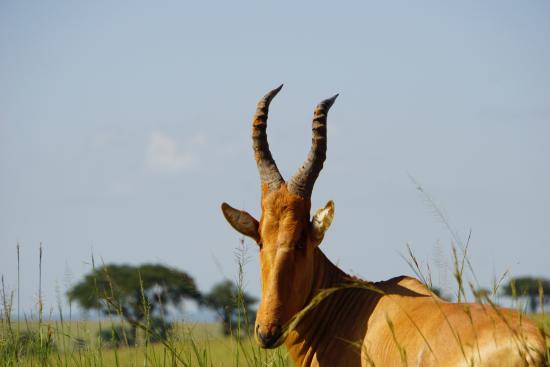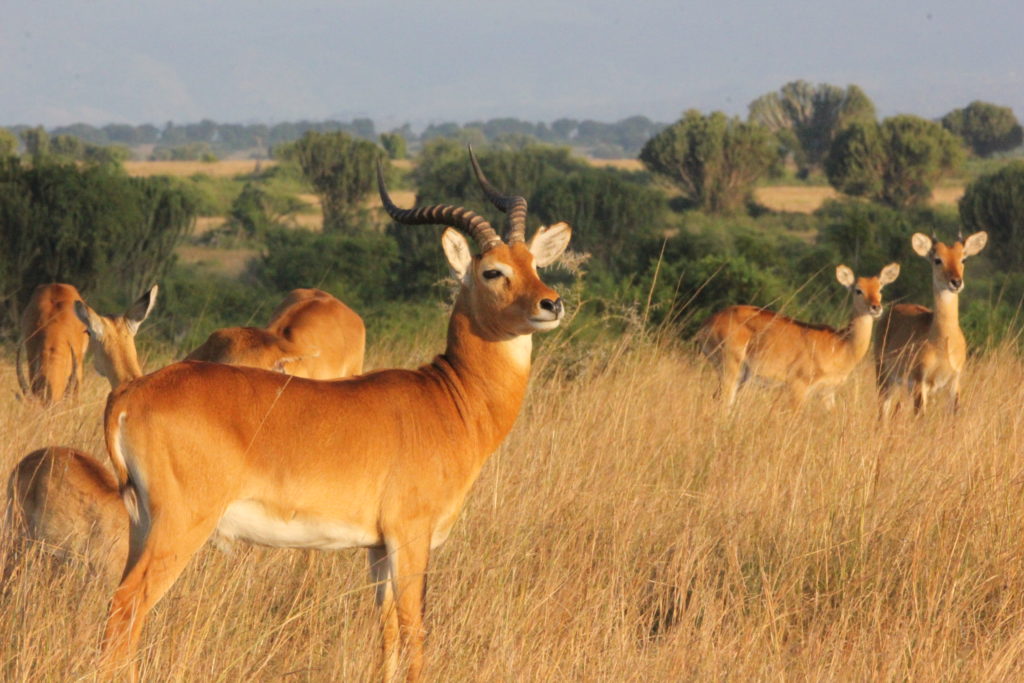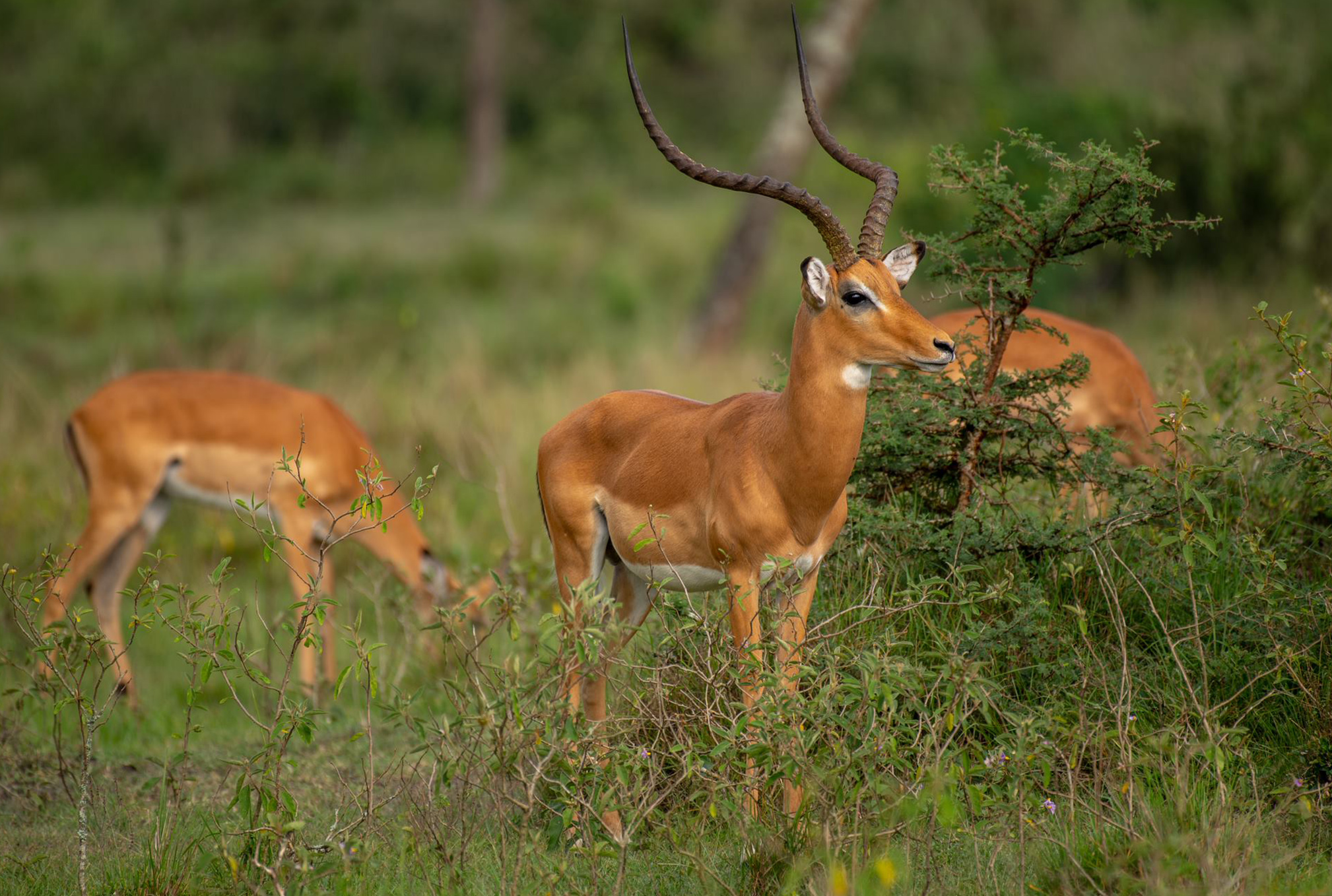
The Jackson’s hartebeest in Uganda
The Hartebeest
The Jackson’s hartebeest in Uganda. There are two species of the huge, awkward-looking, tan-colored antelope called the hartebeest.
African antelopes include the hartebeest (Alcelaphus buselaphus), often called kongoni or kaama. Of the genus Alcelaphus, it is the sole representative. Eight subspecies have been identified, including two that are occasionally regarded as separate species.

Its structures
It has a short neck, pointed ears, a particularly long forehead, and strangely formed horns. It has extraordinarily lengthy legs, which frequently have black patterns. Typically, the coat is short and lustrous.
The western hartebeest has a sandy brown coat, but the Swayne’s hartebeest has a chocolate brown coat. In every subspecies, both sexes have horns, though the females’ are thinner.
The hartebeest stands out from other antelopes in addition to having a long face because of its big chest and sharply sloping back. Long dorsal processes of the vertebrae in this area cause an obvious hump over the shoulders.

The Hartebeest behaviour
The hartebeest are mostly active during the day, grazing in the early morning and late afternoon before taking a nap in the shade around noon. The species is gregarious and can create herds of up to 300 people. More people congregate in areas with lots of grass. Moving herds, on the other hand, are less unified and frequently scatter. A herd can be separated into four groups: females with their young, non-territorial adult males, young males, and territorial adult males. The females create groups of five to twelve animals, each of which has four generations of offspring.
About female hartebeest
Females compete for control of the herd. It’s common for men and women to fight. Males can make an attempt to conquer a region and its female inhabitants when they are three or four years old. A resident guy will defend his home and engage in combat if threatened. The male defecates at the edge of his territory to mark it.
The brains of hartebeest are extremely developed, and they are extraordinarily attentive and careful animals. Hartebeest are usually peaceful animals, but when threatened, they become vicious. One creature feeds while keeping watch for danger, frequently perched atop a termite mound to get a better view. When in danger, an individual starts off, and the whole herd takes off in a single file. Lions, leopards, hyenas, and wild dogs prey on adult hartebeest; cheetahs and jackals hunt young hartebeest. Hartebeest may potentially be a target for crocodiles.
The Jackson’s hartebeest in Uganda-Behavior
Hartebeest make low quacking and grunting noises, similar to sassabies. Children are typically more noisy than adults and will quack when threatened or being pursued. Defecation is used by the hartebeest as a visual and olfactory display. Herds are typically sedentary animals that only move when necessary, such as during natural disasters.

Hartebeest Reproduction
The year-round mating of hartebeest has one or two peaks that are influenced by the availability of food. Males and females both attain sexual maturity between the ages of one and two. Subspecies and regional variables affect reproduction differently. Mating takes place in the territories that a single male defends, which are typically in open spaces. The dominant male may win a tough battle for supremacy, smell the female’s genitalia, and follow her if she is in oestrus.
When a female in oestrus stretches out her tail to show her receptivity, the male will occasionally try to obstruct her path. She might ultimately become still and consent to being mounted. Brief and frequently repeated copulation might occur twice or more in a minute. Females frequently mate with numerous males in huge herds.
Gestation period
A single calf weighing around 9 kg (20 lb) is born following an eight to nine-month gestation period. Contrary to wildebeest, which give birth in herds on the plains, births typically peak in the dry season and occur in thickets. Although calves are capable of moving about independently soon after birth, they often lie in the open next to their mothers.
The Hartebeest diet
Because they are grazers, grass makes up the majority of the diet of hartebeest. When compared to the other Alcelaphine species, the hartebeest consumes substantially less food. The hartebeest’s long, narrow nose helps it graze on the leaf blades of short grasses and nibble off the leaf sheaths of grass stems. Additionally, it can obtain nutrient-dense food even from tall, senescent grasses. Due to its adaptations, the hartebeest can survive the dry season, which is typically challenging for grazers, and still eat well.
The Jackson’s hartebeest in Uganda
Taking a game drive safari in Uganda’s Murchison Falls National Park is the best way to see hartebeest. On a safari in Uganda, you can also see Jackson’s hartebeest, which has a healthy population in Kideo Valley.






